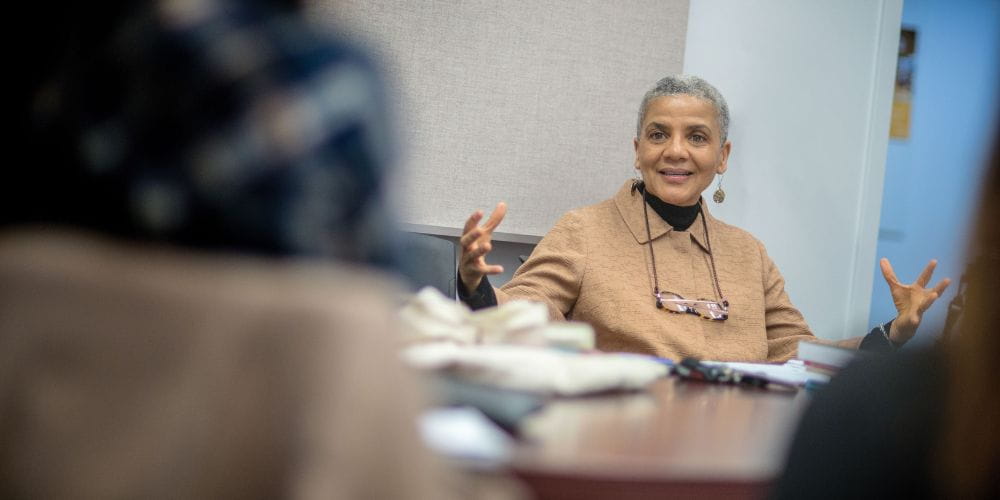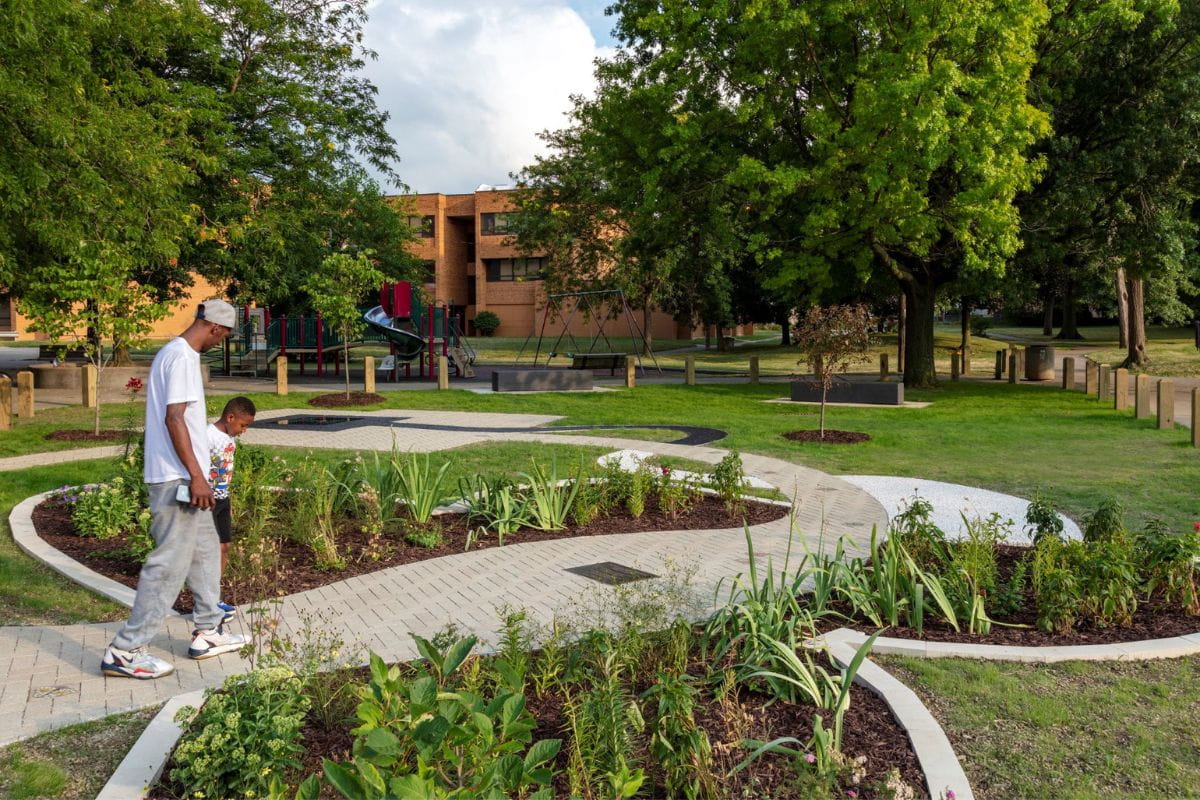A mission to preserve Black cultural history

Throughout her career, landscape architect Diane Jones Allen has made underserved and often overlooked communities a focal point.
Whether it’s designing memorials to victims of racial violence, helping historic freedmen’s towns thrive in the face of urban sprawl, or exploring how self-liberated slaves adapted to life in Louisiana’s swampy wetlands, The University of Texas at Arlington professor ensures that her research and design work are rooted in landscapes that are both physical and cultural.
“The history of the place and how its people are tied to a landscape is called cultural overlay,” said Allen, who also directs UTA’s landscape architecture program. “The culture of the users of a space—their history, their stories, the way they interact with the space itself—definitely impacts the physical landscape.”
And when landscape architects build on or shape a space without considering the culture, breakdowns inevitably occur.
“How do people react when spaces don’t respond to them? That’s when you find broken things,” she said. “That’s why you have to take culture into account when you’re designing and planning.”
Freedmen’s towns
An ongoing project of Allen’s has been her work to help preserve historic Black communities in the Dallas-Fort Worth Metroplex. So-called freedmen’s towns were African American municipalities and communities founded by formerly enslaved people. Several of those communities still exist today, though they face persistent environmental threats and encroachment from urban sprawl.
For Allen, responding to the needs of those communities and helping equip them with the tools they need to thrive is paramount.
“To me, having a community like that preserved is just as important as the Lincoln Memorial,” said Allen, citing one of those towns, Garden of Eden, as an example. “These spaces should be sacred because they make us realize that there’s something beyond us. It keeps us human. If we don’t know where we came from, we don’t know who we are.”
Lessons from Louisiana
Her current work in Louisiana looks at the past to preserve future longevity. Water management there has often focused on keeping water out of communities. Now sustainability advocacy groups are starting to consider how best to live with the water.
Allen said at least some of the answers lie in the state’s “maroon landscapes”—a term for the locations where self-liberated slaves established homes, learning to live with the natural ebb and flow of the Louisiana wetlands in the 18th and 19th centuries. Her book, “The Maroon Landscape: A Cultural Approach to Climate Resilience,” will be published by MIT Press later this year.
“They created free communal societies in an environment that challenged them with swampy ground, extreme heat, insects, snakes and alligators, yet at the same time nourished and protected them,” she wrote in “Living Freedom Through the Maroon Landscape,” an article published in the journal Places. “The ways in which maroons cultivated and cared for their unstable environment remain a vital cultural legacy that landscape architecture as a discipline should not overlook.”
Common Ground Relief, a New Orleans-based organization committed to working for environmental and disaster justice, has brought Allen into its discussions about water conservation and preserving Louisiana’s wetlands.
“They want their work to have a connection to people, and that makes me really excited,” she said. “I live in the present, but I’m also thinking about my son’s future, and connecting the past to the present is a way to help the future, especially in important issues like climate change. You have to look at all those pieces in order to make a real difference.”
Memorializing victims of violence

Away from UTA, Allen’s firm, Design Jones, recently led the development of the Rice Butterfly Memorial at Cudell Park in Cleveland, Ohio. The memorial commemorates Tamir Rice, the 12-year-old Ohio boy shot and killed on a playground by a police officer in 2014.
Allen and her team installed a marble and stone memorial etched with Tamir’s face and a surrounding butterfly garden. She said that her goal was to create a welcoming, hopeful space that not only honors Rice’s life, but also acknowledges the beautiful potential in every young Black person.
Closer to home, Allen is designing another memorial to a victim of racial violence: Fred Rouse, a Black man lynched in Fort Worth in 1921. The memorial, which was championed by Rouse’s grandson, Fred Rouse III, his family and the Tarrant County Coalition for Peace and Justice, will include a rain garden, a garden path and a memorial wall, all meant to provide a space for reflection and education on Rouse and his legacy.
“We want people to remember, to learn, and to honor the lives of Tamir Rice and Fred Rouse,” Allen said. “They’re tragic stories, but we can make a better future after them. It’s about letting people know that such a thing happened so that it won’t happen again.”
Allen said her work, from research to hands-on community projects like the memorials, is meant to forge a connection to something meaningful.
“Black history is American history, and it impacts issues that affect us all,” Allen said. “Connecting to that history makes us feel grounded to something. It tells us, ‘I came from this story. My story is important.’”
- Written by Amber Scott – Marketing, Messaging, and Engagement